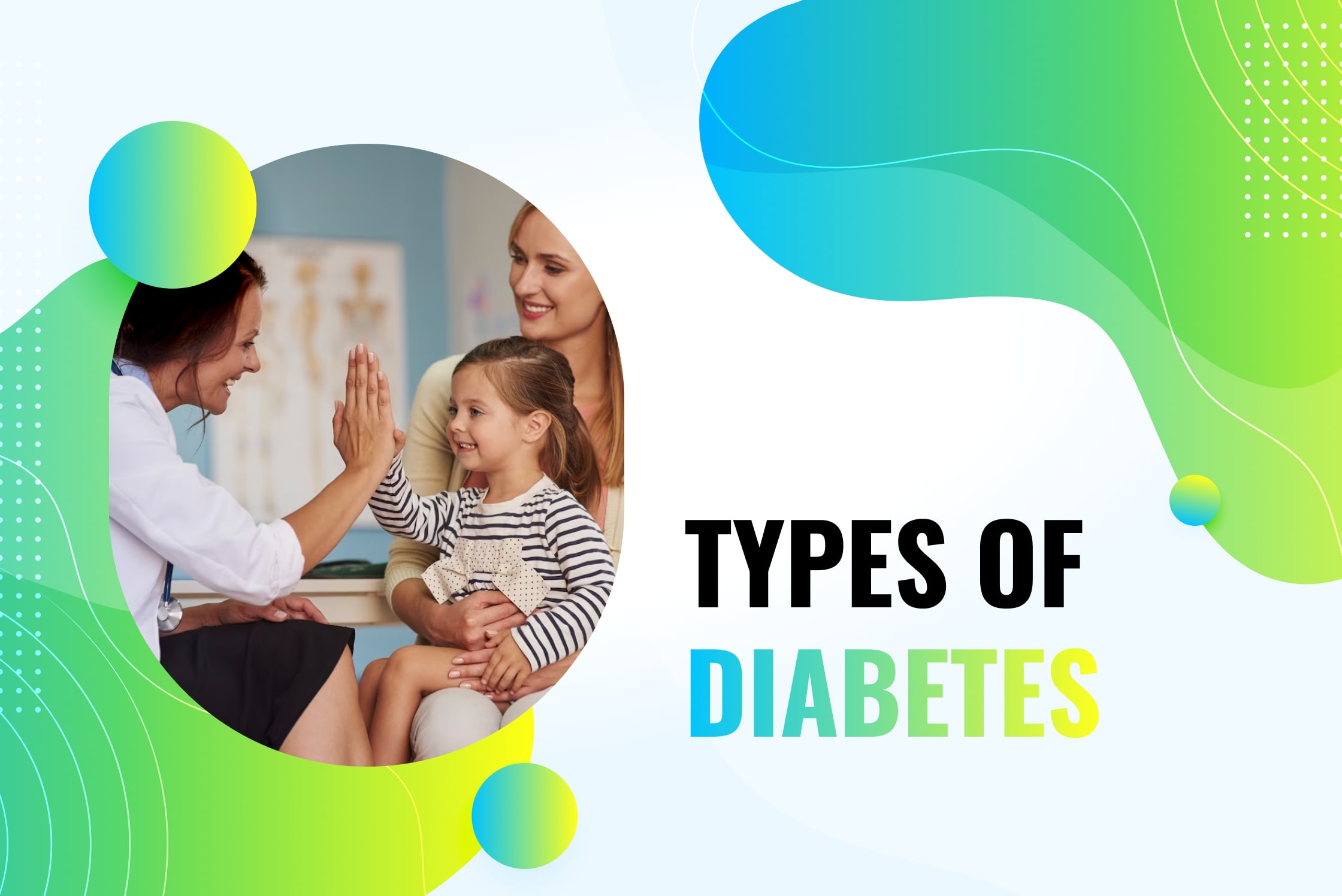Types of diabetes: Type 1 & 2 And Gestational
Did you know that there are three types of diabetes?
Type 1, Type 2, and Gestational diabetes. In this post, you’ll learn all about them.
It’s important to know which type of diabetes you may have before you even begin treatment. So, without further ado, let’s dive in.
3 Different Types of Diabetes: Overview
There are three main types of diabetes – Type 1, Type 2, and Gestational diabetes. Each type has unique features and characteristics, so it’s essential to understand how they affect people with the condition.
In a nutshell, Type 1 and Type 2 diabetes are what most people fall into. Gestational diabetes, on the other hand, can only be connected to pregnant women.
In each section, we’ll explain each type of diabetes, its symptoms, and treatments.
What Is Type 1 Diabetes and What Are the Symptoms?
Type 1 diabetes is a severe illness that affects how your body processes glucose.
The immune system attacks and destroys cells in the pancreas, preventing insulin from being produced correctly, and leading to high blood sugar levels.
Common symptoms of type 1 diabetes include:
- Frequent urination
- Excessive thirst
- Fatigue
- Weight loss
- Nausea
- Vomiting
- Blurred vision
These symptoms can cause complications if left untreated, such as blindness or kidney failure.
What Is Type 2 Diabetes and What Are the Symptoms?
Type 2 diabetes is a chronic health issue that can take its toll on your body’s ability to process carbohydrates, fats, and proteins.
It happens when the amount of insulin your body produces isn’t enough or if specific cells don’t react correctly with insulin – causing blood sugar levels to soar too high.
This condition may not manifest outwardly right away – but be aware of subtle signs such as:
- Increased thirst
- Frequent urination
- Fatigue
- Blurred vision
- Sores that don’t heal
- Sudden weight loss
If untreated, type 2 diabetes can lead to serious health problems such as blindness, heart disease, stroke, and kidney failure.
What Is Gestational Diabetes and How Does It Develop During Pregnancy?
Pregnancy is often a time of joy, but it can also bring on additional health risks.
One of them can be gestational diabetes.
It affects many women during pregnancy and occurs when your body doesn’t create enough insulin to process the glucose (sugar) in your blood.
Your family history, weight before or after getting pregnant, and ethnicity are all risk factors for gestational diabetes – with Black, Hispanic, and Asian women having higher rates than Caucasians.
Although this condition generally resolves itself naturally following childbirth, there are precautions you should take; monitor blood sugar levels regularly while staying mindful of any dietary changes that could be beneficial to keeping those numbers balanced!
How Do You Know If You Have Diabetes or Not?
If you are wondering if you may have diabetes, it is crucial to get tested by your healthcare provider and make sure.
You can test for diabetes at home or in a hospital. Each has its advantage and disadvantages.
But the first thing to do is get tested to ensure you get the proper treatment.
Differences And Similarities Among All the Diabetes Types
While there are three main types of diabetes – Type 1, Type 2, and Gestational diabetes – they all share certain similarities regarding their symptoms and treatments.
In this section, we will explore these different types of diabetes and look at how they differ in terms of causes and effects on our bodies.
Differences:
- Type 1 diabetes is an autoimmune condition caused by the body’s immune system attacking and destroying pancreatic cells that produce insulin. At the same time, type 2 diabetes is a chronic condition in which the body produces too little or no insulin.
- Symptoms of type 1 diabetes are more pronounced than symptoms of type 2 and gestational diabetes at diagnosis.
- While treatment for type 1 diabetes typically includes insulin therapy, medications used to treat type 2 diabetes focus on helping the body use its own natural insulin more effectively.
- Gestational diabetes only appears during pregnancy and resolves itself after childbirth.
Similarities:
- All three types of diabetes can lead to serious health problems if left untreated, such as blindness, nerve damage, heart problems, kidney failure, and stroke.
- Risk factors for all three types of diabetes can include obesity and a family history of the disease.
Tips For Living a Healthy Life with Diabetes
Diabetes can feel overwhelming and unmanageable, but it’s important to remember that you have the power to lead a healthier and happier life.
Eating balanced meals with complex carbs, proteins, and fats throughout the day is integral for sustaining good glucose levels, while exercise helps your body use insulin most efficiently.
Most importantly, though – staying in close contact with a medical professional specializing in diabetes care will help navigate any highs or lows more effectively and provide guidance regarding lifestyle changes!
Final Thoughts
The first step to curing diabetes is to know exactly which type you have.
We hope you found this post useful as we listed the explanation for each type and the similarities and differences.
Most importantly, getting tested immediately is important if you experience any of the symptoms listed.





